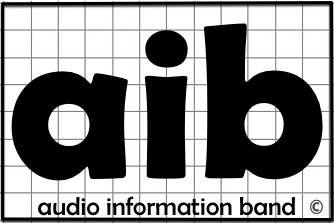The Audio Information Band©
By virtue of a ‘First Principle’ approach to design, many Copyrights and Patents are used across all GROVER NOTTING® technology, that is created and owned in-house or by our partners. The copyrighted Audio Information Band© initiative was formulated in-house initially as a design guide, however it has engaged many, and with permission is now used in industry education. Such is the interest in this particular piece of Intellectual Property we present it here for your interest.
Throughout the course of human history, the principal source of ‘real time’ audio information has been the voice; whether communicating by speech, entertaining by singing, warning by oral exclamation or expressing emotion by crying, laughing or more subtler utterances. In addition, the majority of acoustic musical instruments operate within the frequency bandwidth of the human voice, particularly those that deliver melodic structure and ‘musical information’.
At the heart of our Critical Listening speaker system design is the natural and linear reproduction of the human voice, developing from this central focus in terms of overall system creation. Achieving optimum coherency and pinpoint definition throughout the vocal range are challenging aspects of speaker system design, but the most satisfying when a peak Critical Listening System is realised.
From the outset, we determined to develop a guiding design parameter to focus R&D. We researched the potential bandwidth of the voice, along with practitioner consultation to ascertain industry understanding. Technical research results were conclusive, but end-user consultation outcomes varied dramatically. Some practitioners even considered the voice bandwidth to be 300Hz – 3kHz, a telecommunications industry definition. The most commonly used descriptive term was mid-range, a general statement that is essentially indefinable, presenting significant potential for misinterpretation.
Our technical research suggested the lowest frequency produced by a male opera singer had been measured at 80Hz, the highest created by a female pronouncing the letter ‘S’ measured at 11kHz. For our purpose, we concluded that the potential frequency bandwidth of the voice was 80Hz–11kHz. Furthermore, our research with end-user terminologies and understandings indicated a new term would be useful to define the 80Hz-11kHz frequency bandwidth that represented the potential of the voice.
Armed with this information we arrived at the term Audio Information Band© to define the frequency bandwidth of 80Hz – 11kHz, where most audio information and detail resides. This established our R&D discipline and guiding design focus. It also facilitated the transmission of more accurate and meaningful information to our suppliers, customers and the industry in general.
Initially intended only for in-house use, in 2009 we began presenting the Audio Information Band© term and concept to industry professionals in presentations including lectures and white papers. Without exception, the term and concept instantly resonated with all parties, and we were encouraged to copyright it, which we did (see the following logo). Today it is used by educators, journalists and practitioners.

